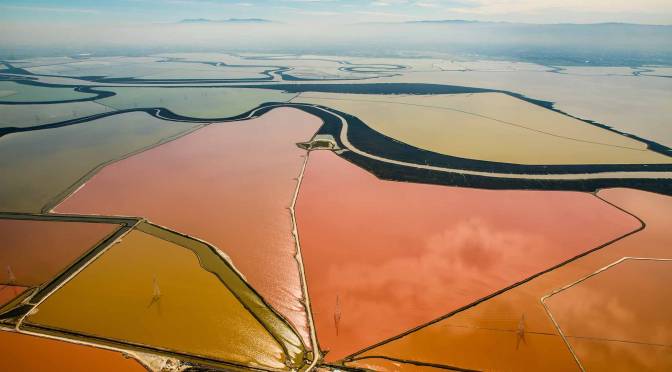In an interview with Artforum, Storr described his focus on sensuality as a reaction to the anti-aesthetic current in contemporary art. (Perhaps Storr has been reading Kant’s Critique of Judgment?) Defending his position, Storr comments, “The sensual world is not necessarily a beautiful world, and pleasuring the public has never been a requirement of modern art. Sensing doesn’t always mean enjoying.”
Storr’s group show has been described as quite “political” in tone, and as a show with a “postcolonial” thesis. The group show certainly includes a number of works documenting contemporary geopolitical conflict. While setting up the show, Storr notes that he became particularly interested in “the way artists respond to violence, cultural violence, physical violence” as well as “the way they respond to… these questions of nationality and the fact that nationality doesn’t say very much about most people.” For Storr, the question of “nationhood” and “nationality” seem particularly trenchant today, when so many nations have buckled beneath civil war and ethnic strife. Storr notes, “We have a nationality that is imposed as a political structure…but…[it] is not written in the land.”
At a Venice Biennale marked by “firsts,” history was on every mind, with old Europe trying to escape it and the emerging nations trying to claim it. This year marked the first year that the event included Lebanon, Turkey and Mexico. It was also the first year that the event included an entire pavilion dedicated to Sub-Saharan Africa, and the first time that the event directed by an American. These firsts played against the Venice Biennale’s 110-year history, and against the city’s own storied past.

The Biennale renders the old colonial relations in brick-and-mortar, juxtaposing nineteenth-century colonial powers with their former colonies. This physical proximity brings about a confrontation between these nations and their histories. Though the event is purportedly an exhibition of contemporary art (or, as Storr put it, for “art in the present tense”), a showcase for today’s most interesting work, we never stray far from history.
My fellow observers described the 52nd edition of the Venice Biennale as particularly “postcolonial” in flavor. Depending on the speaker, this comment cut both ways. For some, this year’s Biennale placed too much emphasis on the past. Storr chose to include a record number of established artists in the Arsenale’s group show. His decision to look backwards incurred criticism from curators and critics searching for the Next Big Thing. For others, “postcolonialism” denotes a position already passé and irrelevant, too Eighties, too bound up in that decade’s debates.
For many, this year’s Biennale is a “postcolonial” affair because it is unusually inclusive. And indeed, many of the former colonies chose to display works addressing their colonial past. The Australian artist Susan Norrie contributed a haunting video installation documenting the environmental devastation wrought by Western mining concerns in rural Indonesia. In the Giardini, Brazilian children, as part of the Morrinho project, built miniature models of favelas out of red clay. Willie Doherty presented “Ghost Stories” (2007), an allegory of Northern Ireland’s recent civil wars.

Consider the British-Nigerian artist,Yinka Shonibare’s “How to Blow Up Two Heads at Once” (2006), a sculpture featuring a pair of dueling figures clad in tail-coats and breeches. The headless figures point old-fashioned pistols at each other. Shonibare’s figures are dressed, not in European cottons and wools, but in brightly patterned batik fabric. The figures are terrifically aesthetic (one can almost imagine these designs on a Parisian runway, with their magpie colors and aggressive patterns), and yet strangely disturbing, even melancholy. The figures engage African history on multiple levels, at once an indictment of the European gamesmanship that divided Africa in the nineteenth century, and a troubling allegory of the ethnic strife that continues to divide Africa today.
Shonibare’s sculpture grapples with African identity. How, Shonibare asks, do we build a nation under these conditions? Are African nations simply European constructs dressed in native garb, or can Africans make something more of their situation, build something functional? Do “foreign” structures remain forever foreign? Although Shonibare’s image (two headless figures dueling with pistols) is undeniably comic, it elicits a dark humor. In the African context, the nineteenth-century’s violence still sits too close to the skin.
For Congolese businessman Sindika Dokolo, the collector behind Check List Luanda Pop, an exhibition dedicated to contemporary African art, the production and display of art in a postcolonial context is inextricably linked to colonialism’s legacy of underdevelopment.
Contemporary African art, Dokolo notes, “is not very African… we are not in control of our own cultural domain and this has had an impact on the content of our artistic production.” Dokolo describes contemporary African art as a conflicted practice, marked by the tension between a tendency towards producing objects imbued with “second-rate exoticism” for the Western market, and a need to produce art that is truly rooted in the African context.
Yet that context, at least in today’s climate, is nearly nonexistent. Like so many postcolonial nations, Angola (where Dokolo is based) does not have the infrastructure, or the funds, to nurture contemporary culture. Today, as yesterday, capital (cultural and otherwise) continues to flow north, away from Africa, or Latin America, or Oceania, or Southeast Asia.




